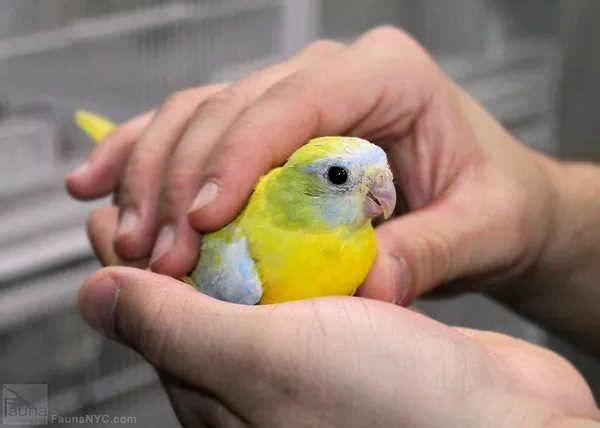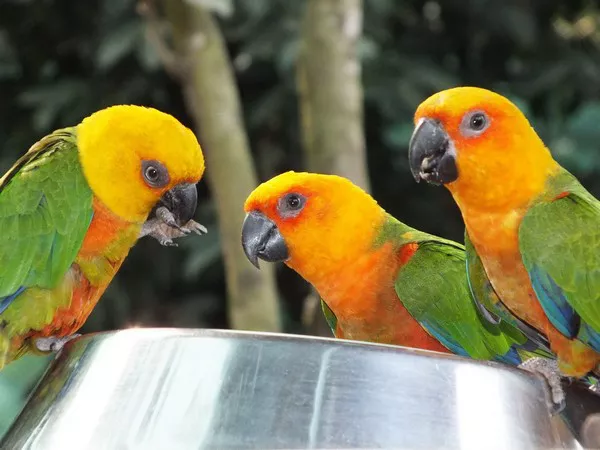Indian Ringneck parrots (Psittacula krameri manillensis) have captured the hearts of bird enthusiasts around the world with their vibrant colors and engaging personalities. Before embarking on the journey of bringing an Indian Ringneck parrot into your home, it’s essential to understand the various factors that contribute to their cost. This article delves into the considerations that influence the price range of Indian Ringneck parrots, helping potential owners make informed decisions.
Factors Influencing Indian Ringneck Parrot Costs
1. Color Mutation:
Indian Ringneck parrots come in a variety of striking color mutations, including blue, lutino, albino, and more. The rarer and more visually captivating the mutation, the higher the cost. These unique colors are the result of breeding efforts, which contribute to their price variations.
2. Age:
The age of the Indian Ringneck parrot can impact its cost. Younger birds, often referred to as “hand-fed” or “hand-raised,” tend to be more expensive due to the time and effort invested in their care during the critical early stages of life.
3. Gender:
In some color mutations, the gender of the bird can influence the cost. For instance, females might be more valuable in certain mutations due to their rarity or specific breeding goals.
4. Breeder Reputation:
Reputable breeders who prioritize the health and well-being of their birds, as well as provide proper socialization, training, and veterinary care, often command higher prices. Purchasing from a trusted breeder can ensure that you are getting a healthy and well-adjusted bird.
5. Location and Availability:
The cost of Indian Ringneck parrots can vary based on your geographical location and the availability of these birds in your area. In some regions, certain color mutations may be more abundant, leading to lower prices.
6. Market Demand:
The level of demand for Indian Ringneck parrots, particularly specific color mutations, can significantly impact their prices. High demand can drive prices up, especially for popular and visually appealing mutations.
7. Included Services:
Some breeders or sellers may include additional services in the cost, such as DNA sexing, microchipping, or providing starter kits with cages and accessories. These value-added services can influence the overall price you pay.
8. Health and Genetic History:
The health and genetic background of the Indian Ringneck parrot play a crucial role in determining its cost. Birds with strong genetic lines and a history of good health tend to be more valuable.
9. Sourcing Method:
The method through which you acquire your Indian Ringneck parrot can impact its cost. Buying directly from a breeder might be more expensive compared to purchasing from a pet store or adopting from a rescue organization.
Average Cost Range
The price of Indian Ringneck parrots can vary widely based on the factors mentioned above. On average, the cost can range from $250 to $800 or even more for certain rare mutations. However, it’s essential to remember that the initial cost is just one aspect of bird ownership. Long-term expenses include proper housing, high-quality nutrition, veterinary care, and enrichment items.
Additional Considerations
Research and Preparation: Before purchasing an Indian Ringneck parrot, conduct thorough research to understand their care requirements, behavior, and needs.
Ethical Considerations: Ensure that you are acquiring your bird from a reputable source that adheres to ethical breeding practices and prioritizes the welfare of the birds.
Budgeting: Factor in the cost of ongoing care and maintenance when budgeting for your Indian Ringneck parrot.
Conclusion
The cost of Indian Ringneck parrots can vary based on a range of factors, including color mutation, age, gender, breeder reputation, location, demand, and more. Before making a purchase, it’s crucial to consider these factors and conduct thorough research to ensure that you are making an informed decision. By understanding the various influences on pricing, potential owners can embark on a rewarding journey of companionship with their Indian Ringneck parrot.
Recommended reading:
























